The first MAS-DNP instrument in the nation for the study of materials forms a cornerstone of the facility. Yielding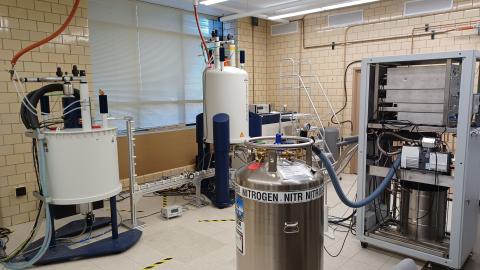 unrivaled sensitivity, MAS-DNP enables the detection of the most minute quantities of materials and enables the structural characterization of interfacial regions. A 1.3 mm fast-MAS-DNP probe enables for combining the advantages of DNP with those of fast-MAS and 1H-detection.
unrivaled sensitivity, MAS-DNP enables the detection of the most minute quantities of materials and enables the structural characterization of interfacial regions. A 1.3 mm fast-MAS-DNP probe enables for combining the advantages of DNP with those of fast-MAS and 1H-detection.
Probes :
- 3.2 mm Bruker HXY MAS-DNP probe
- 1.3 mm Bruker HXY fast-MAS-DNP probe
This spectrometer is equipped with a Magnex wide-bore magnet and can reach temperatures from -100 to 200°C for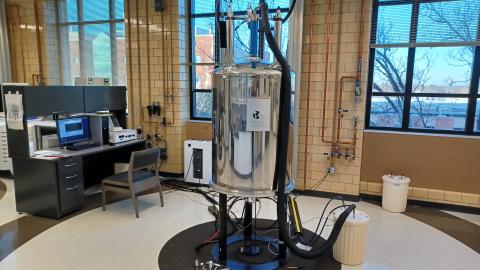 variable-temperature studies. Fast-MAS rates of up to 50 kHz can also be accessed with a 1.7 mm probe.
variable-temperature studies. Fast-MAS rates of up to 50 kHz can also be accessed with a 1.7 mm probe.
Probes:
- 5 mm Chemagnetics HX probe
- 5 mm Chemagnetics T3 probe (can use specialized high-pressure rotors for in situ studies)
- 3.2 mm Chemagnetics HX probe
- 3.2 mm Varian HFXY probe
- 1.7 mm Samoson HX fast-MAS probe
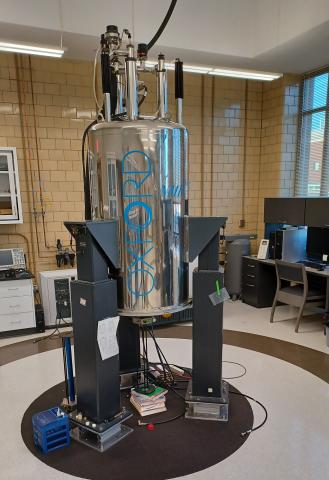
This spectrometer is equipped with 3.2 mm, 1.6 mm, 1.3 mm, and 0.75 mm triple-resonance MAS probes capable of reaching MAS speeds of up to 100 kHz for achieving the highest spectral resolution.
Probes :
- 3.2 mm Varian HXY probe
- 1.6 mm Varian HXY probe
- 1.6 mm Varian pulsed field gradient HXY probe
- 1.3 mm PhoenixNMR HXY probe
- 0.75 mm JEOL HX probe
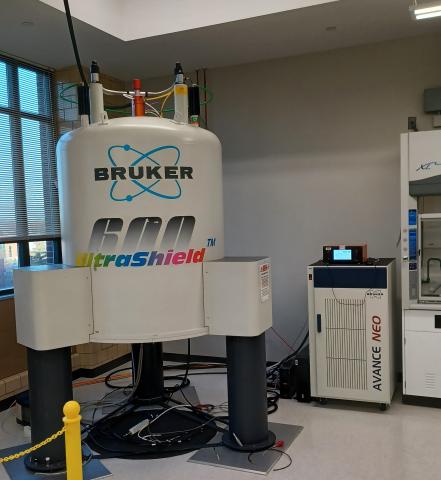
This spectrometer is equipped with a wide array of probes and a console capable of performing multiple-receiver and various fast-MAS experiments with MAS rates of up to 100 kHz.
Probes :
- Static Bruker HX probe
- 4.0 mm Bruker HXY probe
- 2.5 mm Bruker HXY probe
- 1.3 mm PhoenixNMR HXY probe
- 0.75 mm JEOL HX probe
A wet laboratory equipped with a fume hood, Schlenk line, argon glovebox, wet box, rotary evaporator, oven, and 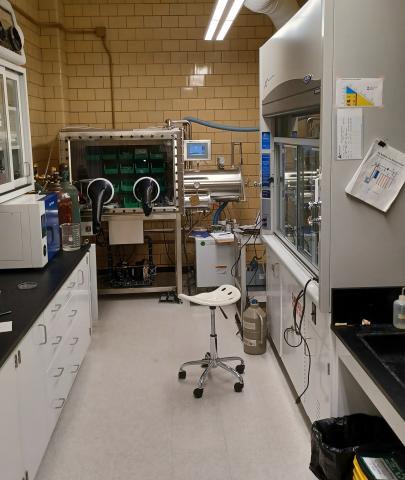 tube furnace is on-site for sample preparation and handling.
tube furnace is on-site for sample preparation and handling.
Frederic A. Perras
Takeshi Kobayashi
Marek Pruski
Long Qi
Aaron J. Rossini
Additional facilities are available at Iowa State University
Rossini group: https://rossini.chem.iastate.edu/prof-aaron-rossini/
Chemistry Instrumentation facility: https://www.cif.iastate.edu/
